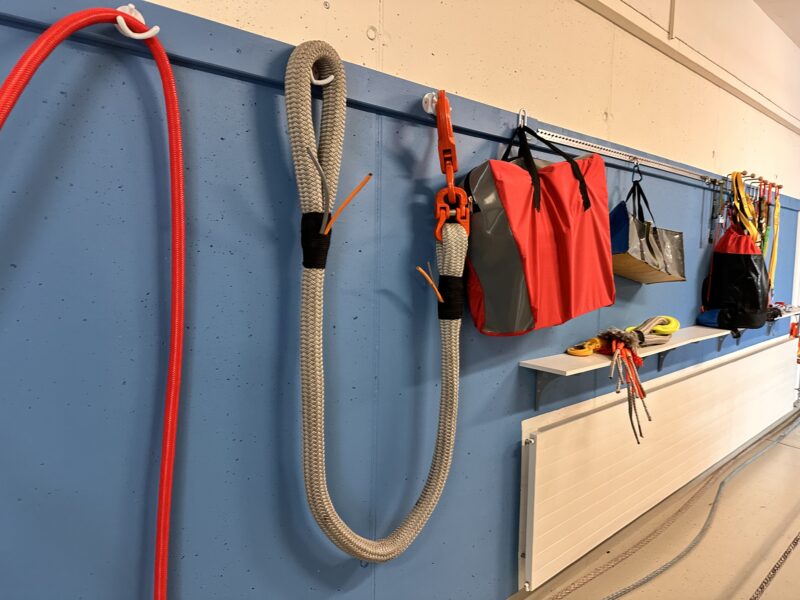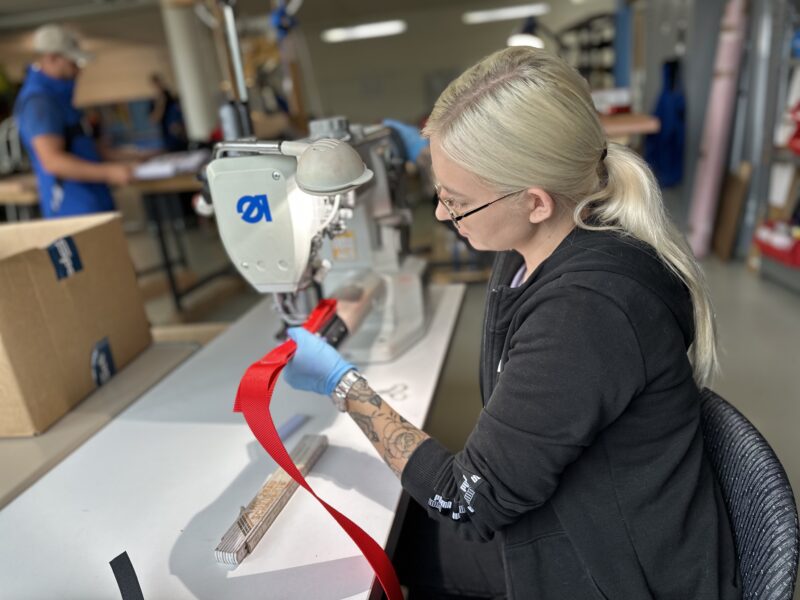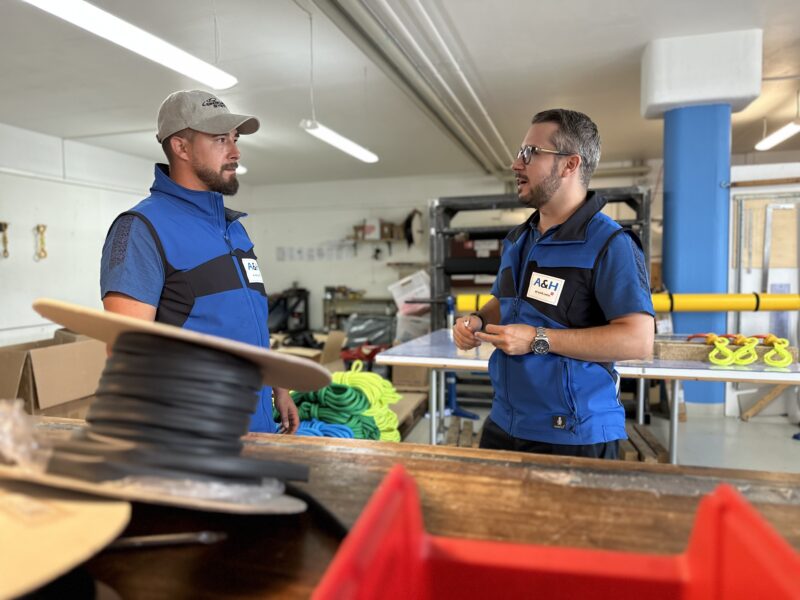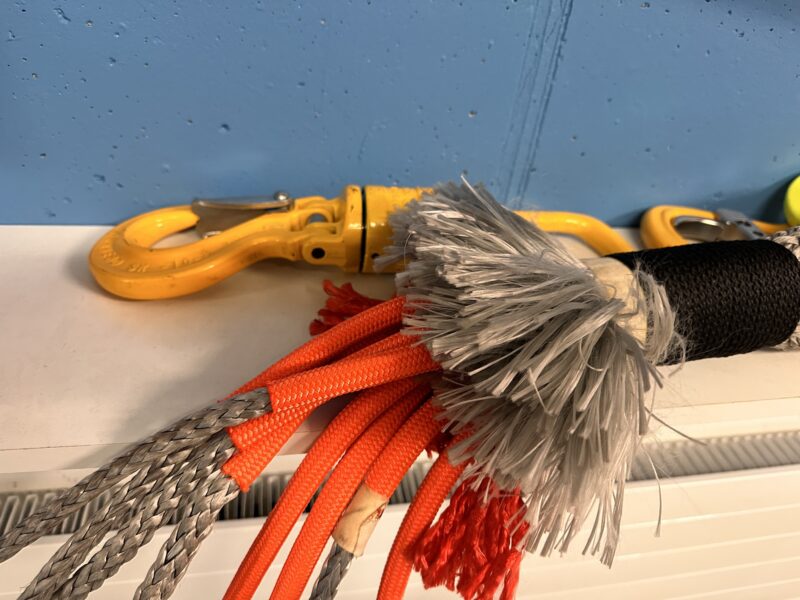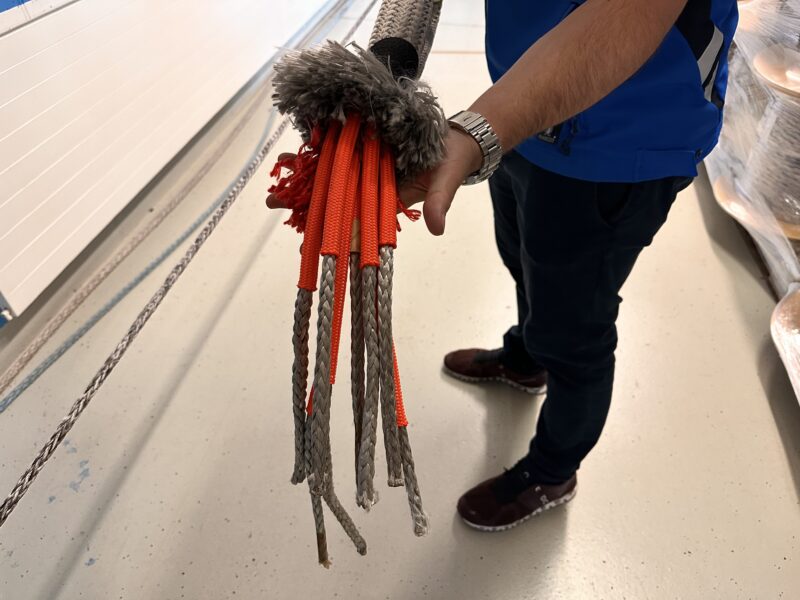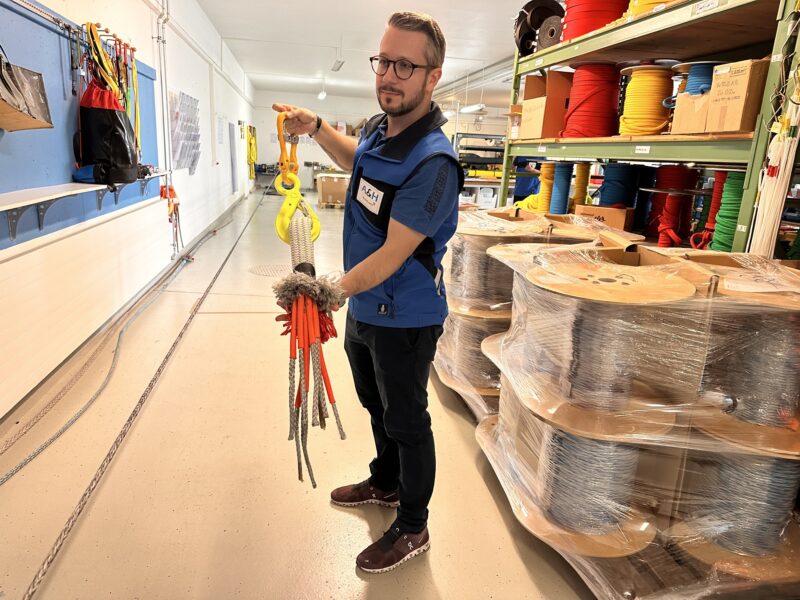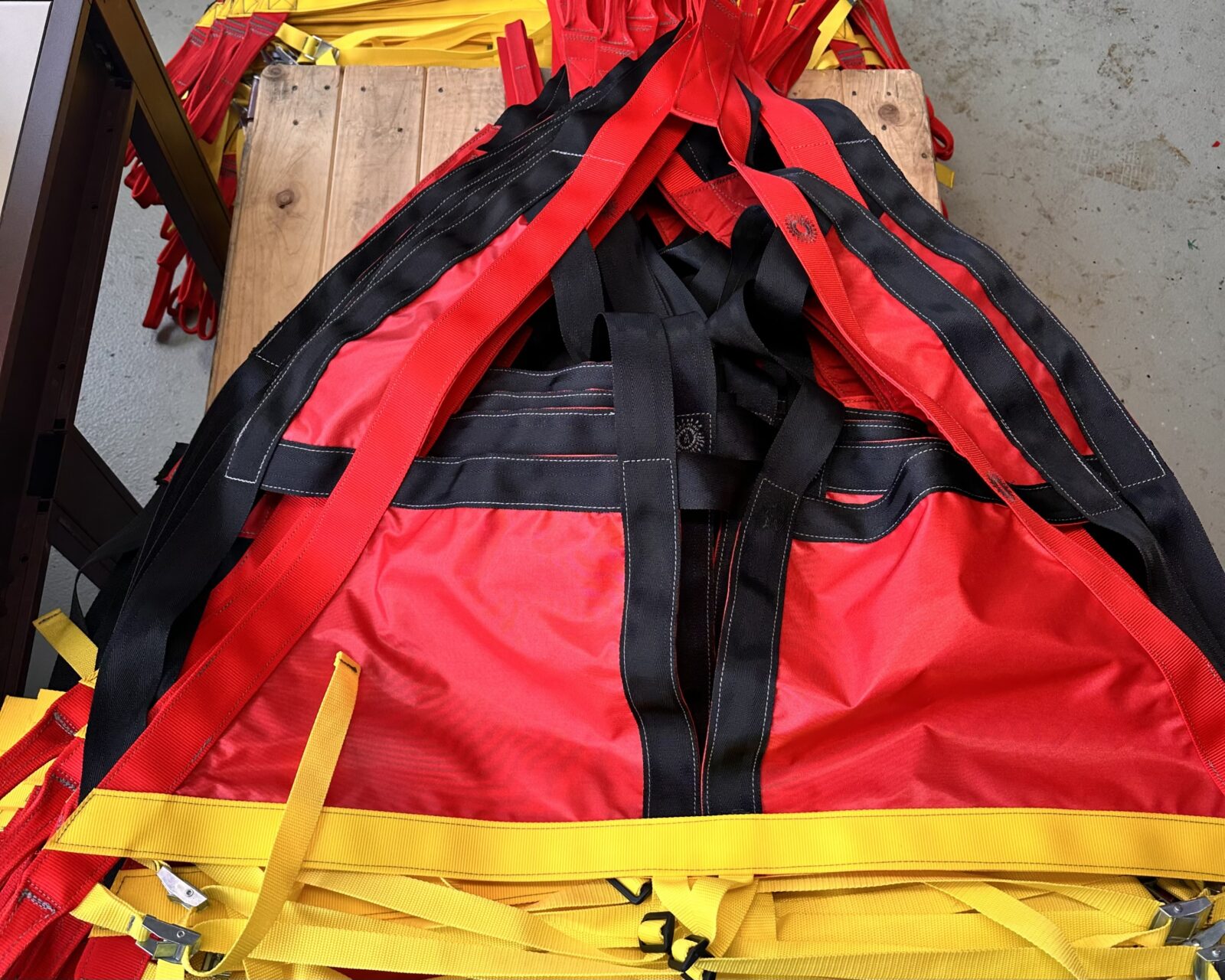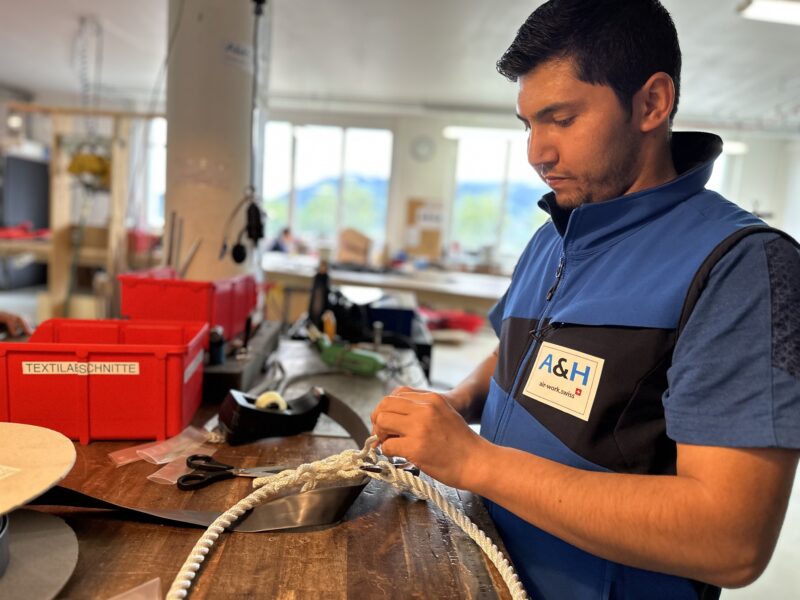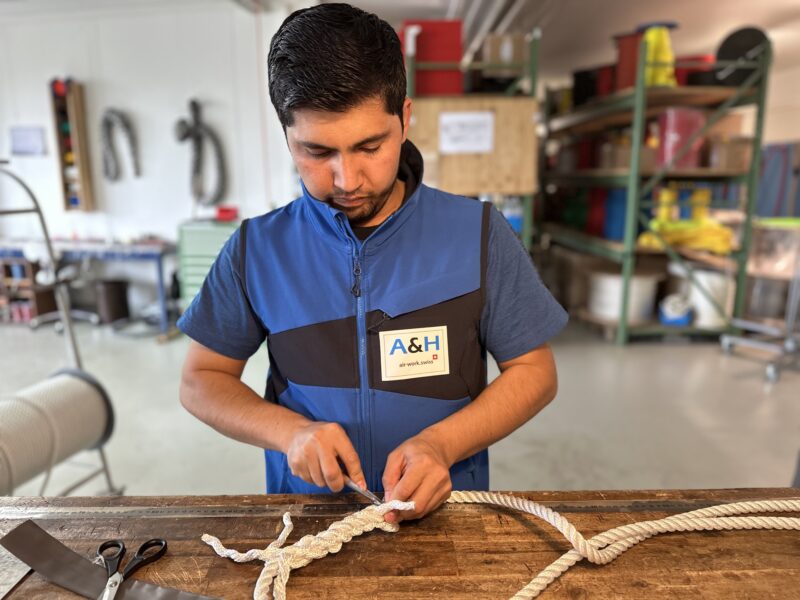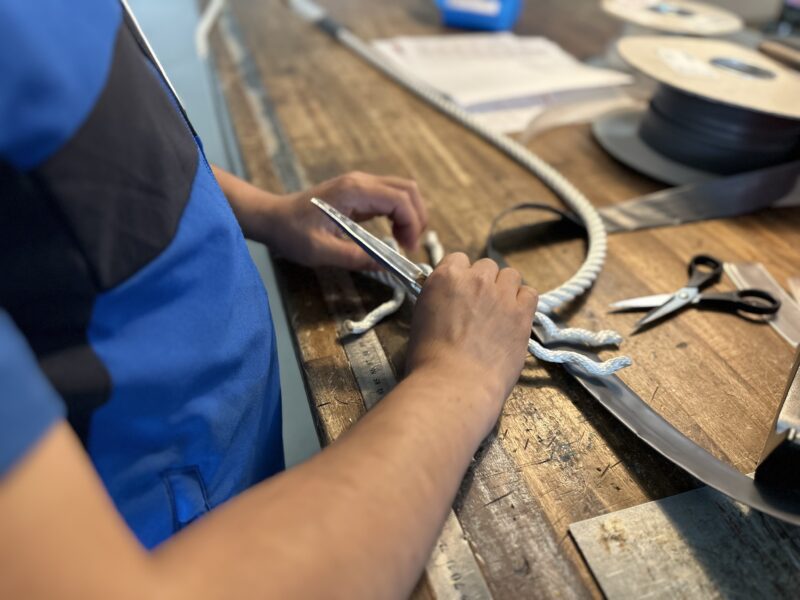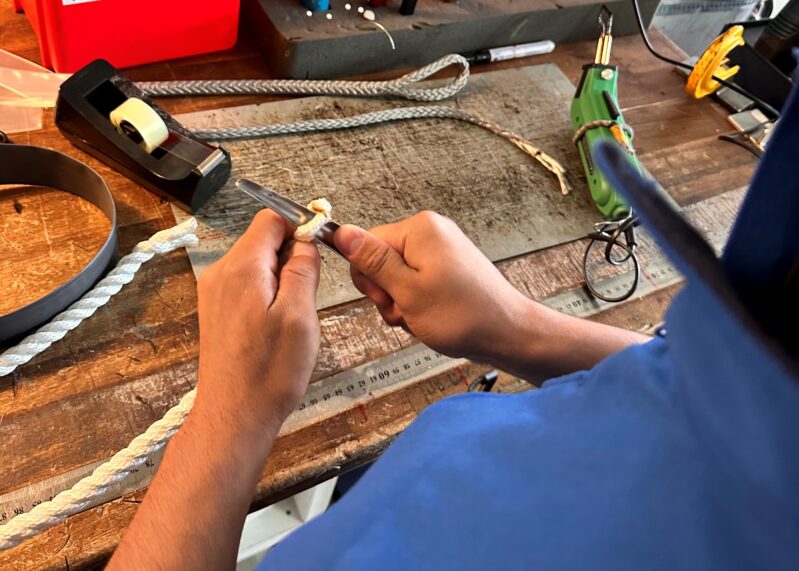Blick hinter die Kulissen
Safe ropes: travelling with AirWork & Heliseilerei
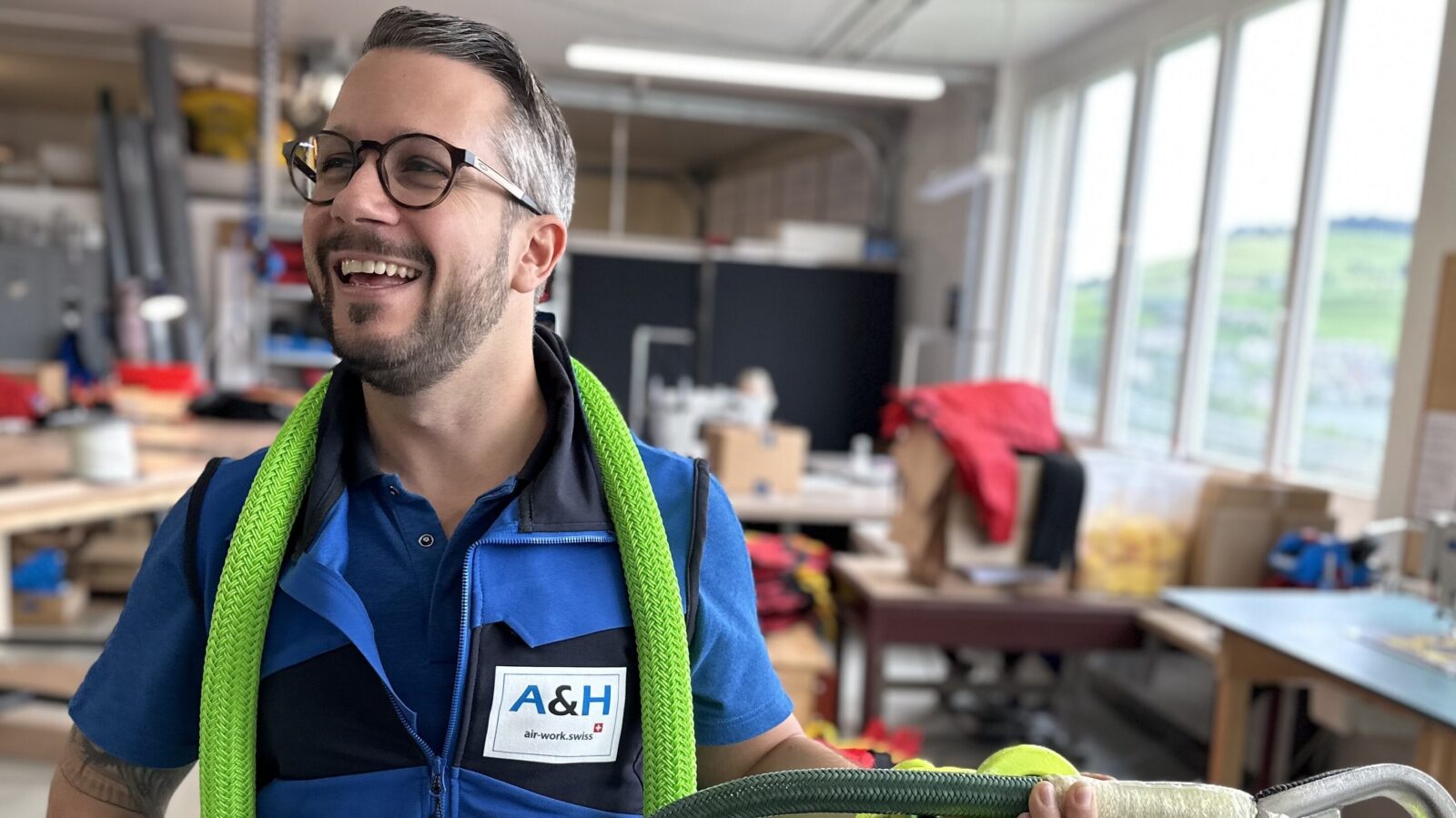
The Swiss armed forces, Rega (the rescue flight service) and private helicopter companies all use the services of AirWork & Heliseilerei of Immensee in the Canton of Schwyz. Their helicopter ropes and rescue equipment such as horizontal nets and evacuation triangles are used for transport by land and air. Swiss Textiles visited the rope making works and took a look behind the scenes.
The area in which AirWork & Heliseilerei operates is as spectacular as its customers. Many of them sound like the cast of an action film: national and international military, police including special units, space travel, fire brigades, Rega or Air Zermatt.
From ski and hiking accidents to injured cows on mountain pastures: there is hardly any transport or rescue operation in which their products are not used. At Immensee in the Canton of Schwyz, “AirWork” develops, manufactures and certifies construction and equipment parts. They include horizontal nets, evacuation triangles and ropes with certified special seams to carry heavy loads, such as tree trunks and farm animals or to hold loads and persons safely. On the highway, in the air and even in outer space.
So far, we are the only certified Swiss business which makes helicopter ropes to carry persons even outside the helicopter fuselage.
Rescue operations in the Alps bring orders for the eight-man team almost throughout the year. According to the Advisory Centre for Accident Prevention, nearly 70,000 persons are injured in the Swiss mountains in winter every year. In summer the figure is 36,000.
AirWork is supervised by the Federal Office of Civil Aviation (FOCA) and the European Air Safety Agency (EASA)
“At present we are the only Swiss business,” Martin Schnoop points out proudly “to be certified for the manufacture of helicopter ropes designed to carry persons even outside the helicopter fuselage.” The Head of Procurement and Logistics has also been the new CEO for a few years now.
From forest warden to rope expert
The company was founded in 1999 by Enrico Ragoni who had previously worked for many years as a forest warden and flight assistant. He came to realize that the helicopter market was in growing need of specific products and services – that is how he hit upon the business idea for what was to become his helicopter ropemaking plant. Today, Ragoni has shortened his working hours and now leaves the operational business to his two successors, Martin Schnopp and Krzysztof Lukaszewski, Heads of Production and Maintenance.
A rope that can take the weight of up to three elephants
In simplified terms, the ropes are made from a number of smaller strands and perform a wide range of duties, depending on the area of use. The method of manufacture and the materials vary accordingly.
One important material is called Dyneema. This chemical fibre achieves extremely high strength values meeting at least seven times the usual safety standard. That is the value specified for the transport of loads. Up to twelve tons can be carried, roughly equivalent to the weight of two or three fully grown elephants. For Human External Cargo, by which is meant the transport of human beings, 14 times the normal level of safety must be guaranteed.
Kevlar fibre in turn is employed to make ropes for use in outer space. They must withstand extreme forces and temperature fluctuations, be stab-proof and resistant to particularly high and low temperatures.
Some rescued persons even told us how comfortable the evacuation triangle had been.
Suspended in the evacuation and rescue triangle
The evacuation and rescue triangle is a good example: this is a red and black jacket with a seating surface, shoulder supports and belts in which persons are carried. Developed and manufactured here in Immensee. Krzysztof Lukaszewski remembers: “In 2021 a helicopter had to fly out when a gondola carrying passengers on the Tirrenbahn in Obwalden became stuck.” All 57 passengers were lifted out individually and carried away in an evacuation triangle. He takes up a stack of freshly sewn triangles and explains how they are fitted. As with climbing kit, a closure system is stretched out between the legs. “Some rescued individuals told us afterwards how comfortable they had felt”, he adds with a smile. What is more the design is so robust that even overweight persons and pregnant women can still be carried.
Splicing and stretching
He is personally well aware of the importance of feeling safe in the air. When he started work at AirWork five years ago he was scared of flying. By no means ideal if you make rescue ropes for the aviation sector! His fears abated somewhat after he had watched the countless audits that each product must undergo.
Splicing and stretching the ropes are just two of these tests. Splicing means joining the ends of a rope together. This creates a durable and high strength union. In the stretching process, surplus expansion is eliminated from the rope, so giving it unusually high tensile strength.

